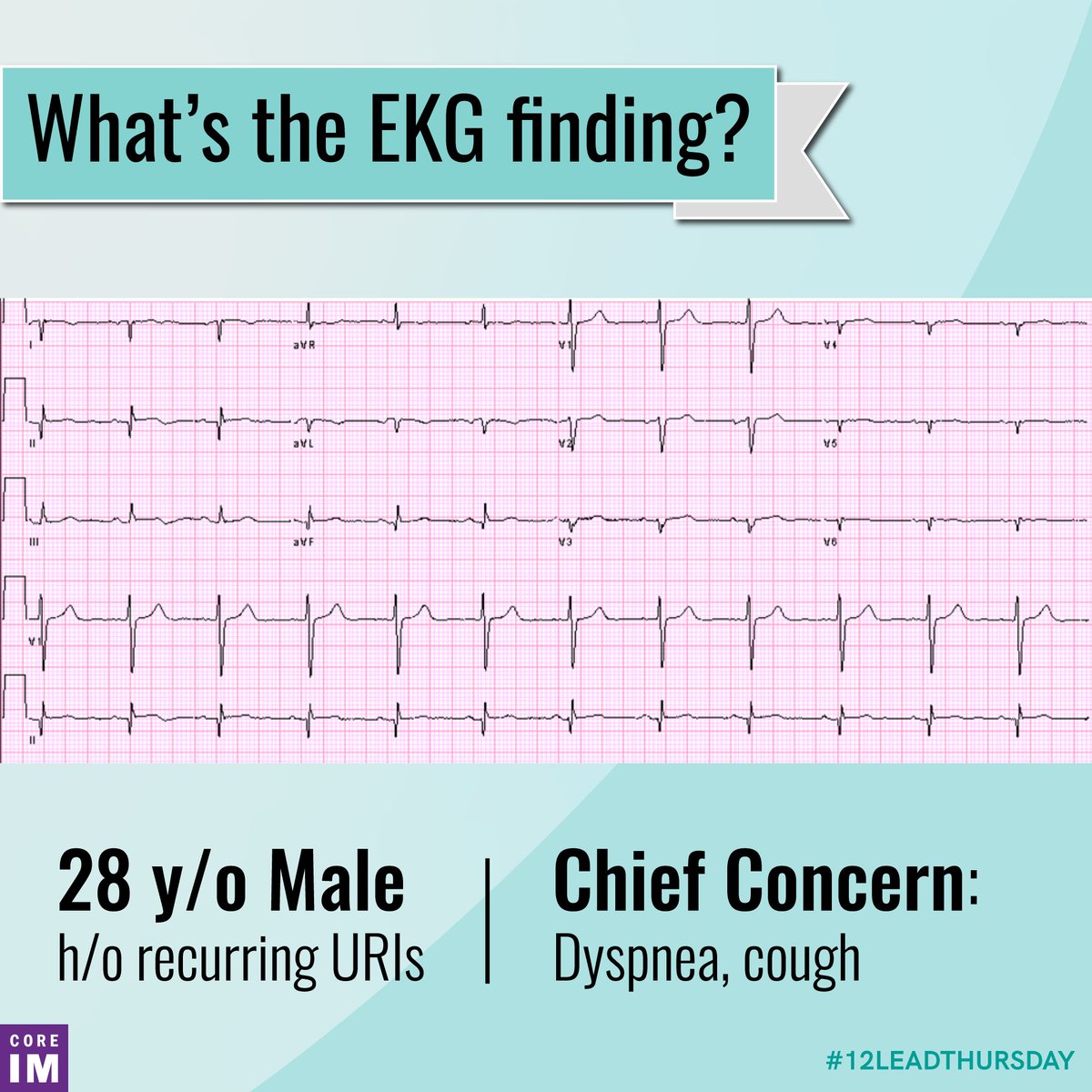
1/ Good morning #MedTwitter, it’s time for another episode of #12LeadThursday! Remember to approach every EKG systematically. Grab your calipers, and let’s dive in!
What are potential causes of this pause?
What are potential causes of this pause?

2/ We can think about pauses in three buckets below. We’ll get into why we think a PAC is causing the pause above, but stop for a moment and consider: what would the EKG look like if AVN blockade or sinus node dysfunction were at play? 

3/ In the above EKG, we see the PAC hiding in a T wave! This PAC reset the SA node, and a pause was born!
Before we move on: if the AVN is dysfunctional, how do you differentiate a blocked PAC from a dropped beat?
Before we move on: if the AVN is dysfunctional, how do you differentiate a blocked PAC from a dropped beat?

4/ In AV block, the P-P interval is constant. The single or intermittently dropped beats occur at regular conduction intervals such as 3:2, 4:3, 5:4.
For non-conducted PACs, the P-P is altered, but not consistent.
For non-conducted PACs, the P-P is altered, but not consistent.

5/ Huge thanks to the author of this byte, @ArisSikolas, and as always to the co-directors of #12LeadThursday: @KelseyGrossman and @GregoryKatz.
You can find this byte and more on our website: bit.ly/3Bf4NE1
You can find this byte and more on our website: bit.ly/3Bf4NE1
• • •
Missing some Tweet in this thread? You can try to
force a refresh




















